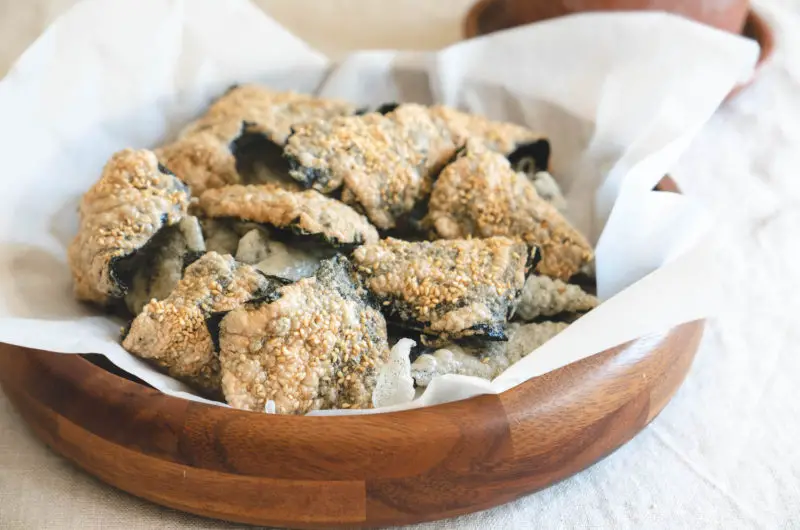This post may contain affiliate links. Please read my disclosure for details at the bottom of this page. As an Amazon Associate, I earn from qualifying purchases on this post about this Korean fried seaweed snack.
Have you heard of temple food? In South Korea, temple cuisine refers to a type of culinary culture that originated in Buddhist temples. A popular type of fried seaweed snack, known as ‘kim bugak’ (김부각), started out as a Buddhist temple food. Nowadays, people often eat these fried seaweed chips as a quick bite, banchan (side dish), or anju (drinking snack).
In this post, we will teach you how to traditionally make this treat. While it takes a lot of time and energy, it is a lot of fun to make these at home!
Let’s get started!

What Is Bugak?
‘Bugak’ (부각) refers to a type of vegetarian deep-fried dish. To make any type of bugak, you start by coating vegetables or seaweed with ‘chapssal-pul’ (찹쌀풀), a paste made from glutinous rice flour. Then, you deep fry the coated vegetables or seaweed. The outer chapssal-pul layer puffs up making crispy chips.
Some common types of fresh produce used to make bugak included green chili peppers, perilla leaves, camellia leaves, burdock leaves, potatoes, and dried seaweed.
Today, we are making the version using ‘kim’ (김), otherwise known as dried seaweed! While the ingredients to make this dish are simple, it does take a bit of time to make!

Korean Fried Seaweed Chips Tips & Tricks?
Below, we listed some tips & tricks to make these delicious treats. Like we stated above, in the recipe, we will list the traditional way of making these as well. Soon, we will be posted a hack to make these in a modern and convenient way! If you are interest in learning the quicker way, make sure to subscribe to our blog for updates!
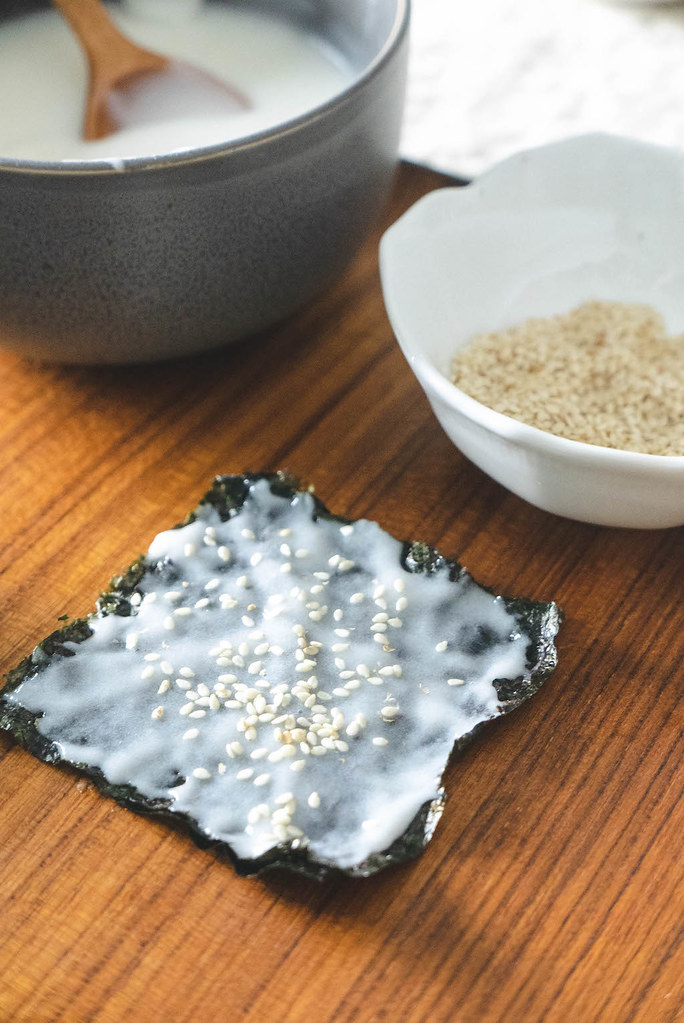

Traditional Method Tips & Tricks
- Start by cutting the seaweed. You can pick any size you want. I like to cut a sheet of seaweed into four pieces!
- To make this using the traditional method, you start by combining glutinous rice flour with water and boil over medium-high heat to make a thick paste. When shopping, you need to buy the correct type of rice flour! Anything other than the glutinous type will not work–this is also the type of rice flour used to make Korean tteok and Japanese mochi.
- When coating the dried seaweed with the paste, make sure to use a thin layer. If you add too much, the snack becomes hard instead of crispy.
- After coating the seaweed with the glutinous rice flour paste, you need to let the seaweed dry again. To do so, you can use three different methods. First, you can let them air dry for two days. Second, you can place the seaweed into an electric dehydrator and dry it for approximately eight hours. Finally, third, you can dry the seaweed at low temperatures in the oven–I recommend drying them at approximately 200°F for a few hours.
- When frying the kim bugak, use a wooden spoon to hold down the sheets of seaweed under the oil. This keeps the sheets from curling up too much.
- Once fried, place the crunchy snacks onto a paper towel on a plate. Then, let them cool. The paper towel soaks up some of the excess oil from the frying process.
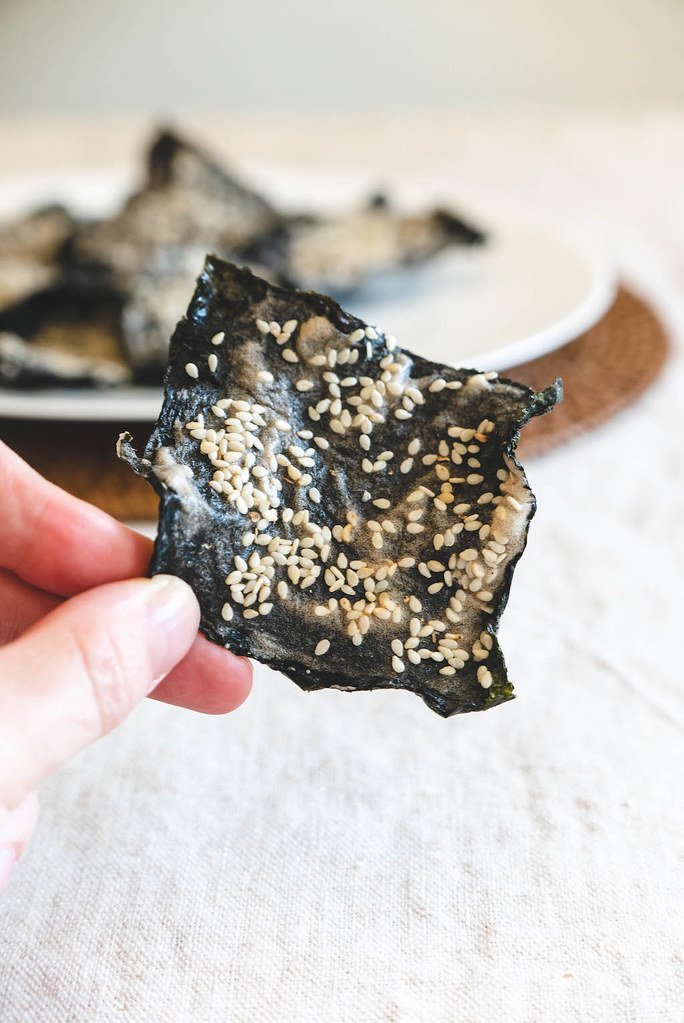
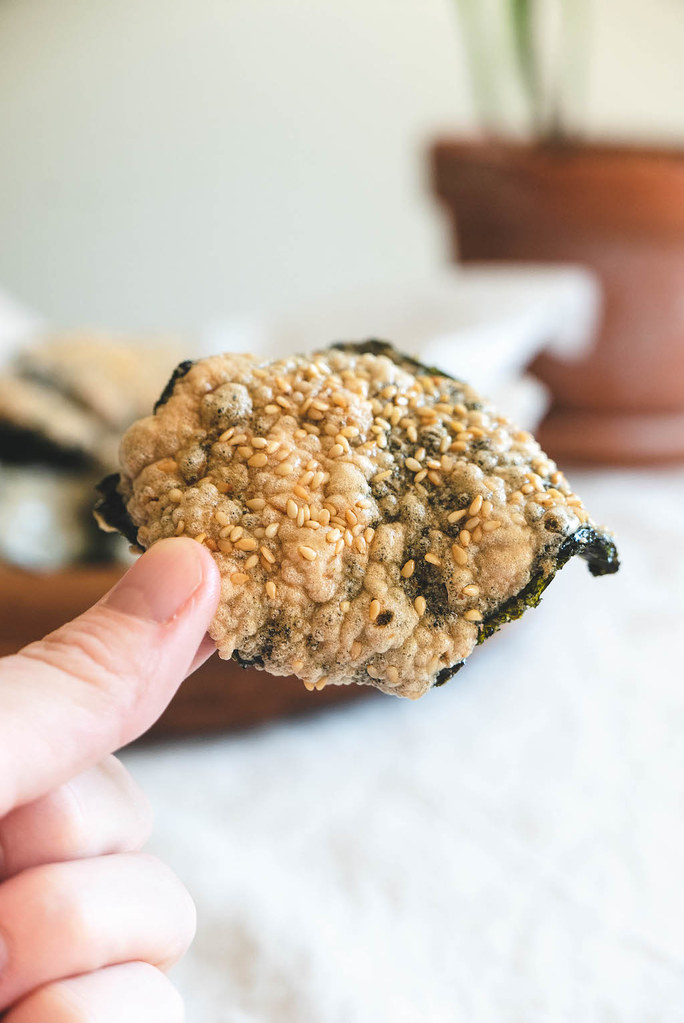
Kim Bugak Frequently Asked Questions:
Below, we listed some questions you may have about this Korean fried seaweed snack recipe. If we do not answer your question below, feel free to leave a comment or email us at [email protected]!
Is This Recipe Free of Major Allergens? (Gluten, Soy, Dairy, Etc.)
For the most part, this recipe does not contain any major allergens. Though that is the case, some people with a shellfish or fish allergy should avoid seaweed as well. Always check with your doctor first before consuming if you are concerned.
Kim bugak is naturally free of other major allergens such as gluten, soy, dairy, tree nuts, eggs, and peanuts.

Is This Fried Seaweed Recipe Vegetarian or Vegan?
Yes! For vegetarians and vegans interested in eating Korean food, this is an amazing snack option for you. To make it vegan, use the water option instead of anchovy or seafood broth!
For reference, Korean temple food is the best option for vegetarians and vegans when visiting South Korea. Temple food is completely vegan! For this reason, I recommend doing Buddhist temple stays when visiting.
What Can You Serve With Kim Bugak?
I enjoy eating kim bugak as a snack when eating out in nature–for picnics and hiking trips! In South Korea, people often eat this as a snack while drinking beer.
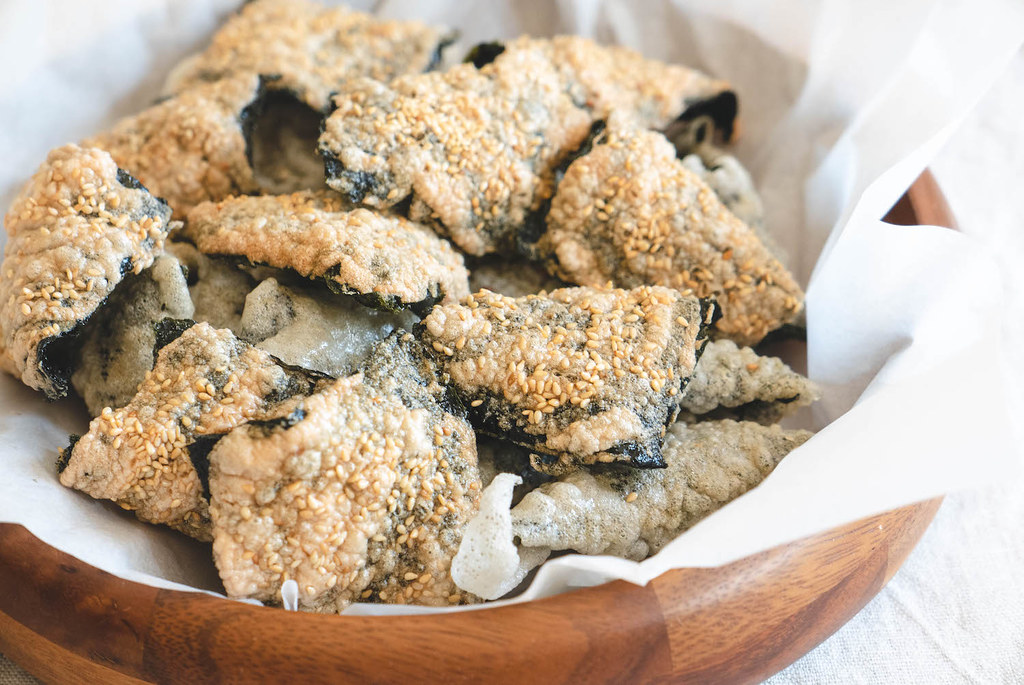
Can You Make This Recipe In Advance?
You can easily make this recipe a few days in advance! If you do, store them in an airtight Ziplock bag or container on your counter or in your pantry.
If you do make these in advance, try to eat them within a few days! Also, if you do not want to make these you can buy them as well!!

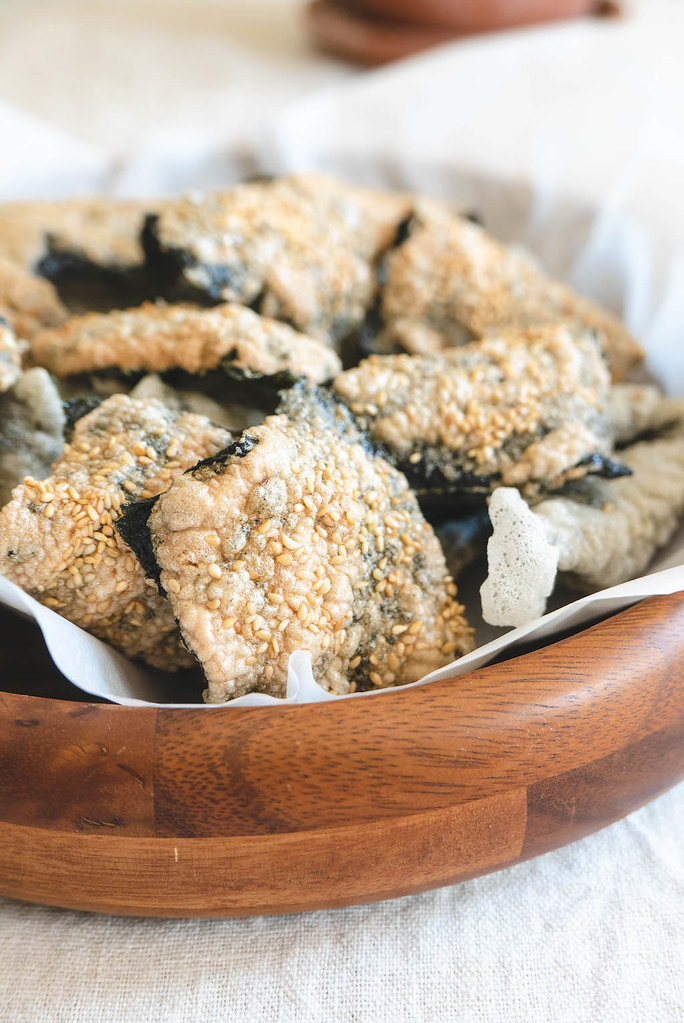
We Hope You Enjoyed Learning About This Korean Fried Seaweed Snack (Kim Bugak)
In the end, we hope you enjoyed learning about this Korean fried seaweed snack. If so, let us know in the comment section below. Also, we would love to hear about your favorite uses for dried seaweed!
If you would like to read more about cooking, you can find further recipes on our blog. We listed some of our favorite Carving A Journey Korean recipes below! For reference, many recipes are influenced by our blended Korean and Southern heritage.
Carving A Journey Korean Dried Seaweed Recipes:
- Cheese Kimbap Recipe
- Tuna Kimbap Recipe
- Triangle Kimbap Recipe
- Tuna Mayo Rice (An Affordable Korean Meal)
If you have any questions or comments, you can also email us at [email protected].
And, finally, we would love to hear from you through our social media as well! You can follow us at @carvingajourney on Instagram, Twitter, Facebook, and Pinterest. Or, if you would like more articles like these, you can subscribe to our blog by joining our mailing list. We hope you enjoyed reading about this Korean fried seaweed chips recipe! Thank you so much for stopping by!

Carving A Journey is a participant in the Amazon Services LLC Associates Program, an affiliate advertising program designed to provide a means for sites to earn advertising fees by advertising and linking to Amazon.com. Although we may earn commissions for our endorsement, recommendation, testimonial, and/or link to any products or services from this website, these opinions are my own and I fully support these products.


